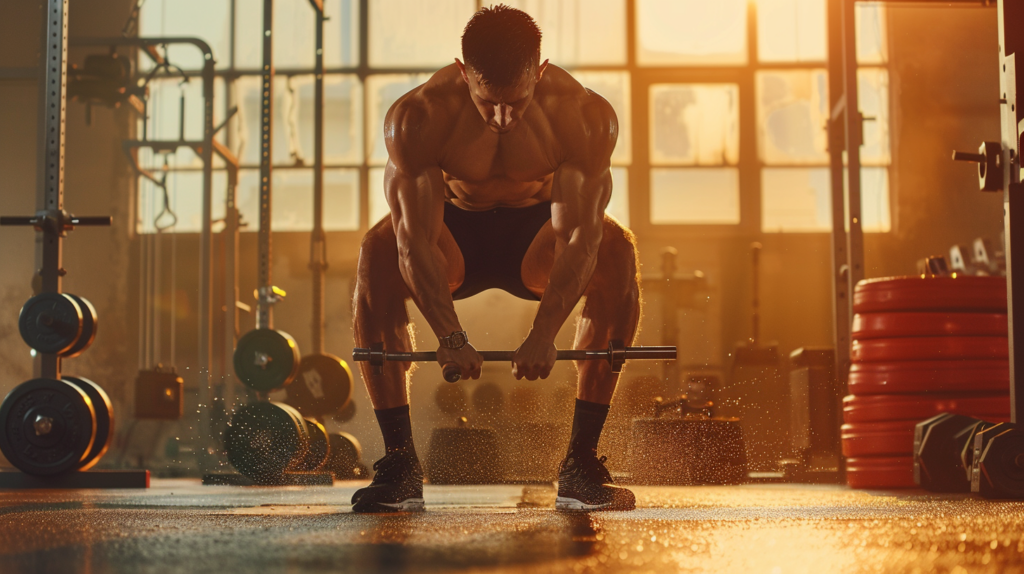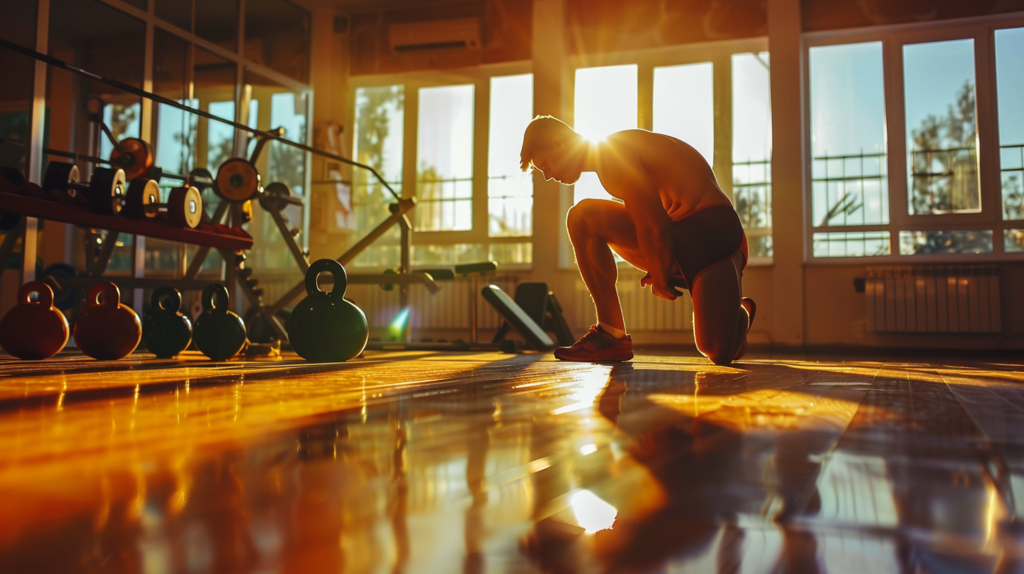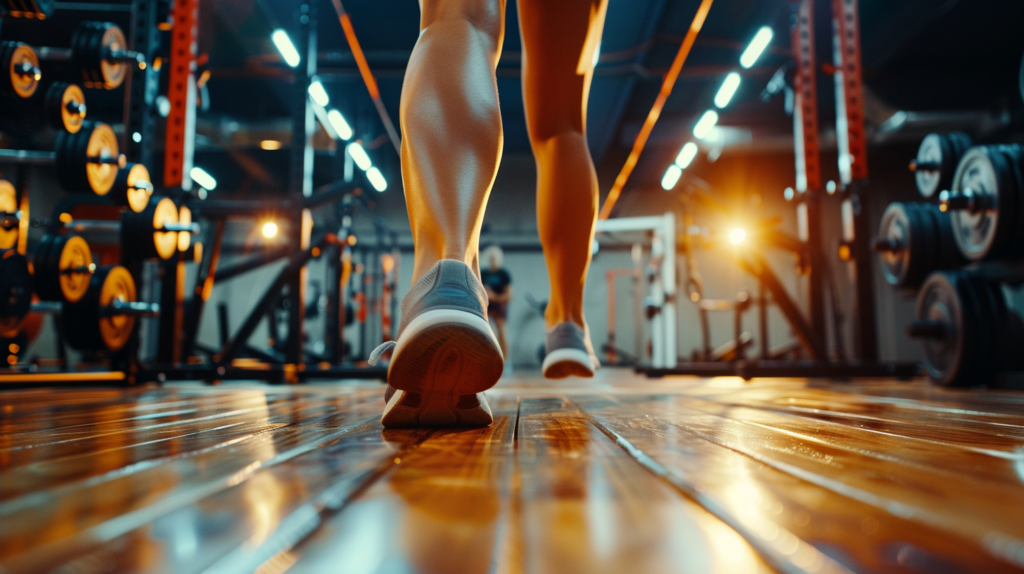Releasing your leg power begins with targeted exercises that enhance strength, stability, and mobility essential for both daily activities and athletic performance. Key exercises like squats and lunges effectively engage multiple muscle groups, while resistance bands can boost growth through leg presses and extensions. Incorporating plyometric drills, such as box jumps, can also enhance explosiveness and agility. Remember to train 2-3 times a week and focus on proper technique to maximize benefits and minimize injury risk. Embrace the challenge to improve your physical capabilities, and you’ll discover even more strategies for revealing your true leg power.
Key Takeaways
- Incorporate squats and lunges to engage multiple leg muscles and build strength effectively.
- Use resistance bands for leg presses and extensions to promote muscle growth and stability.
- Add plyometric drills like box jumps to enhance explosiveness and agility for better athletic performance.
- Focus on proper technique and recovery to maximize effectiveness and prevent injuries during workouts.
- Set specific training goals and maintain a 2-3 times weekly frequency for continuous improvement in leg power.
Importance of Leg Muscles

Leg muscles are essential to our everyday mobility and athletic performance, often serving as the foundation for many physical activities.
Understanding muscle anatomy is fundamental, as the leg comprises various muscles that work in harmony to facilitate movement, support posture, and enhance strength.
The vastus intermedius, part of the quadriceps, plays a pivotal role in knee extension, which is critical for walking, running, and climbing stairs.
Strengthening these muscles not only improves athletic performance but also promotes injury prevention and overall stability.
By prioritizing leg muscle development, individuals can access their potential, gaining the freedom to engage fully in life’s activities while enhancing their physical capabilities.
Embrace the journey toward stronger legs and experience the liberation that comes with it.
Key Leg Functions

While many may take them for granted, the functions of the leg muscles are fundamental to both daily living and athletic performance.
These muscles provide essential knee stability, enabling us to engage in a myriad of activities—from standing up effortlessly to executing powerful athletic maneuvers. Strong legs facilitate efficient movement, supporting mechanics essential for weightlifting and squatting.
Furthermore, they play an important role in enhancing performance in sports that demand leg strength, such as soccer or basketball. By maintaining proper posture and balance, leg muscles empower individuals to navigate their environment confidently.
Embracing the significance of these functions can lead to a more liberated and active lifestyle, ultimately releasing a world of physical possibilities and achievements.
Top Exercises for Leg Power

Building leg power is essential for both athletic performance and everyday functionality, and incorporating specific exercises can greatly enhance strength and stability.
Key exercises include squats and lunges, which engage multiple muscle groups for thorough development. Resistance bands can be utilized for leg presses and leg extensions, providing variable resistance that encourages growth and alignment.
In addition, plyometric drills such as box jumps and jump squats can greatly boost explosiveness and agility.
Integrating these exercises into your routine not only fortifies your legs but also enables you to perform daily activities with greater ease and confidence.
Embrace the challenge and witness how revealing your leg power propels you toward new heights, both in sports and in life.
Effective Training Tips

Effective training is essential for maximizing leg power and achieving desired fitness goals. To release your full potential, consider the following tips:
- **Prioritize **muscle recovery: Allow muscles to repair and grow stronger by incorporating rest days into your routine.
- **Maintain ideal **training frequency: Aim for consistent workouts, ideally 2-3 times a week, to build endurance and strength.
- Focus on form: Proper technique not only enhances effectiveness but also reduces the risk of injury, ensuring your journey towards liberation is safe and empowering.
Benefits of Strong Legs

Strong legs offer a multitude of benefits that extend beyond mere aesthetics. Building leg strength enhances leg endurance, allowing you to engage in physical activities for longer periods without fatigue. This foundation not only boosts athletic performance but also aids in efficient muscle recovery, reducing soreness after workouts.
| Benefit | Description | Impact |
|---|---|---|
| Improved Athletic Performance | Enhances speed and agility in sports | Greater competitive edge |
| Enhanced Stability | Supports balance and coordination | Reduced risk of falls |
| Injury Prevention | Strengthened muscles protect joints | Fewer injuries during activities |
| Functional Capacity | Eases daily tasks like climbing stairs | Increased independence |
Embrace the transformative power of strong legs, and liberate your potential in every stride!
Frequently Asked Questions
How Often Should I Train My Leg Muscles Each Week?
To optimize leg training frequency, aim for two to three sessions per week, allowing for adequate muscle recovery. This balance enhances strength, promotes endurance, and reduces injury risk, empowering you to achieve your fitness goals effectively.
What Are Signs of Overtraining My Leg Muscles?
Ah, the elusive signs of overtraining—when your legs whisper sweet nothings of muscle fatigue, yet you push on. Prioritize recovery techniques to rejuvenate, ensuring strength flourishes rather than falters in your quest for liberation.
Can I Strengthen My Legs Without Weights?
Yes, you can strengthen your legs without weights through bodyweight exercises like squats and lunges. Incorporating balance training enhances stability, promoting functional strength and empowering you to achieve your fitness goals effectively and efficiently.
What Is the Best Warm-Up for Leg Workouts?
An elite athlete improved performance by incorporating dynamic stretches and foam rolling into their warm-up routine. This approach enhances flexibility and reduces injury risk, ultimately optimizing leg workouts for maximum effectiveness and liberation in movement.
How Do I Track My Leg Strength Progress?
To effectively track leg strength progress, regularly record your performance metrics, such as weight lifted and repetitions. Utilize a structured workout log and set specific goals, fostering motivation and liberation in your strength training journey.
Conclusion
In summary, the vastus intermedius serves as the silent architect of leg strength, underpinning every stride and leap. By embracing targeted exercises and effective training strategies, individuals can forge a foundation of power and stability, akin to the roots of a mighty oak. Strong legs not only enhance athletic performance but also cultivate resilience in daily life. Ultimately, commitment to leg development reveals a pathway to unparalleled potential, transforming the ordinary into the extraordinary.














